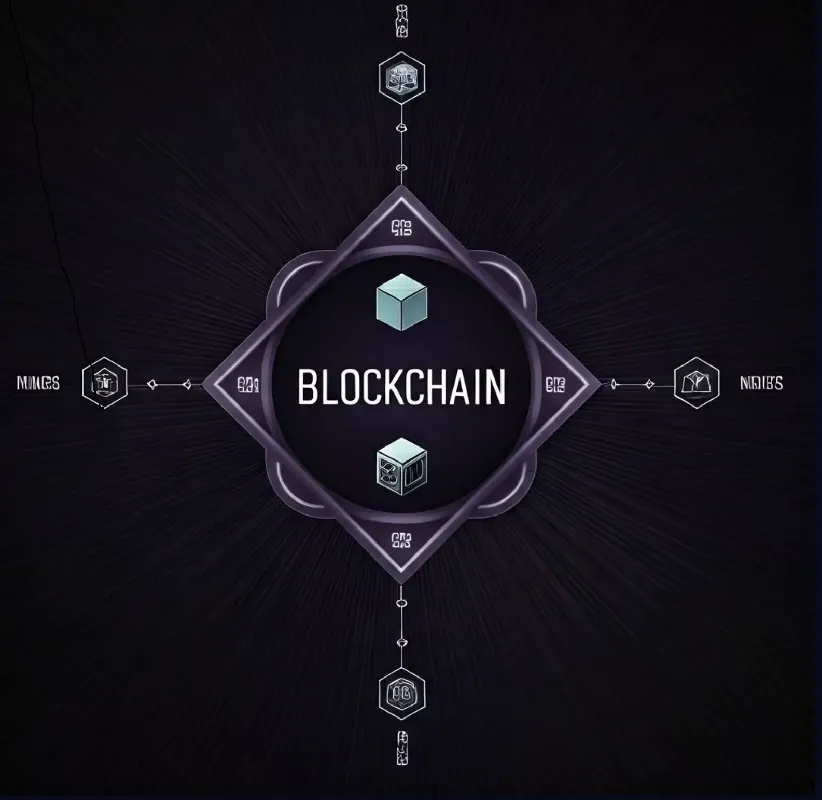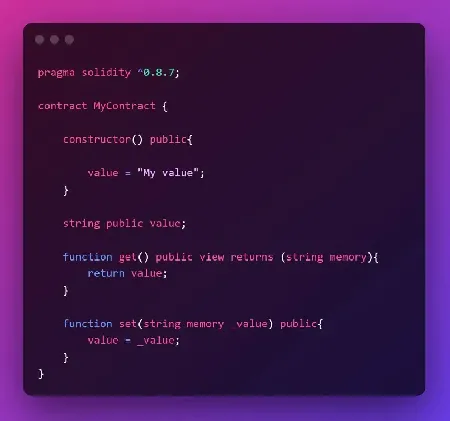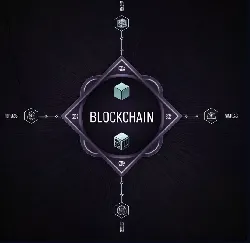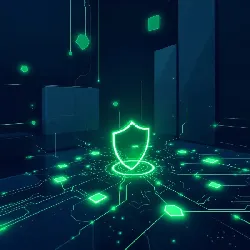What is Blockchain?

Blockchain is a decentralized, distributed ledger technology that stores data across a network of computers,often referred to as “nodes.” Unlike traditional databases, where data is managed by a central authority, Blockchain ensures that no single party has total control.
Key Features:
-
Block Storage: Data is recorded in “blocks,” which are cryptographically linked to each other to form a continuous chain.
-
Decentralization: Control is distributed among all participants in the network, enhancing transparency and resilience.
-
Immutability: Once entered, data cannot be modified or deleted,only appended with new entries.
Initially developed for Bitcoin in 2009, blockchain is now the foundation for a wide range of technologies including cryptocurrencies, decentralized finance (DeFi), non-fungible tokens (NFTs), and smart contracts.
2. Core Concepts of Blockchain
✅ Shared Ledger
Unlike traditional databases, Blockchain organizes information in cryptographically linked blocks.
✅ Versatile Data Storage
It’s not limited to transactions,Blockchain can store anything from contracts to medical records.
✅ True Decentralization
No central control point; instead, all participants share responsibility for data integrity.
✅ Permanent Records
Transactions, once confirmed, are irreversible and visible to all network members (especially in public chains like Bitcoin).
3. How Blockchain Works
Data Handling
Blockchain runs on small programs known as scripts that manage tasks like data input, access, and storage.
Distributed Copies
Every node keeps a copy of the entire Blockchain, making tampering extremely difficult.
Bitcoin Example:
-
Transactions are grouped into ~4 MB blocks.
-
Each block is cryptographically hashed.
-
The hash links the current block to the next,forming a secure chain.
4. Blockchain Transaction Flow
-
Initiation: A user submits a transaction using a digital wallet.
-
Mempool Queue: The transaction enters the mempool, waiting to be picked by miners.
-
Block Creation: Once selected and validated, the transaction is placed in a block.
-
Mining (PoW): Computational effort is used to validate the block.
-
Finalization: The block is added to the chain after confirmation by subsequent blocks (about 1 hour for Bitcoin).
Note: Ethereum now uses Proof-of-Stake (PoS), which is faster and more energy-efficient.
5. Decentralization: A Backbone of Blockchain
-
Every node stores the same data.
-
Any malicious change on one node will be rejected by the majority.
-
This consensus-driven model makes manipulation nearly impossible.
6. Transparency in Action
-
Public Blockchain Access: Platforms like Ethereum allow anyone to see transactions.
-
Blockchain Explorers: Tools such as Etherscan let users monitor transaction activity in real time.
-
Encrypted Identities: While data is public, personal information is protected through cryptography.
7. Is Blockchain Really Secure?
Yes—but with caveats.
-
New blocks are added linearly and in order.
-
Changing any past data breaks the cryptographic chain.
-
A “51% attack” (gaining control over majority of the network) is theoretically possible but extremely difficult in large networks like Bitcoin.
Bottom line: No system is invincible, but Blockchain is among the most secure digital infrastructures we’ve built.
8. Bitcoin vs. Blockchain
-
Blockchain’s Roots: First proposed in 1991 by Stuart Haber and Scott Stornetta.
-
Bitcoin’s Launch: Implemented in 2009 by Satoshi Nakamoto to power decentralized payments.
Bitcoin uses Blockchain,but Blockchain itself is far more versatile and can support:
-
Land registries
-
Identity verification
-
Digital voting
-
Smart contracts
9. Real-World Use Cases of Blockchain
General Applications
-
Cryptocurrencies: Like Bitcoin, Ethereum, and stablecoins.
-
Enterprise Adoption: Walmart, Siemens, Unilever, and Pfizer are using blockchain in supply chain, logistics, and product tracking.
-
IBM’s Food Trust: Tracks food from farm to store shelf.
Industry-Specific Examples
-
Banking & Finance: Near-instant cross-border payments.
-
Healthcare: Securing electronic medical records (EMR).
-
Real Estate: Accelerating and securing title transfers.
-
Smart Contracts: Enabling auto-execution of legal agreements.
-
Supply Chain: Authenticating “organic,” “local,” or “fair-trade” labels.
-
Voting Systems: Reducing fraud and increasing transparency.
10. Blockchain: Pros and Cons
✅ Advantages
-
Accuracy: Validated by thousands of computers.
-
Cost-Effective: Cuts out intermediaries.
-
Decentralized: Eliminates single points of failure.
-
Security: Encrypted and tamper-proof.
-
Transparency: Transactions are open and traceable.
-
Inclusive: Enables access for the unbanked.
❌ Disadvantages
-
Energy-Intensive: Especially PoW systems like Bitcoin.
-
Limited Throughput: Some networks can only handle a few transactions per second.
-
Misuse Potential: Criminal activity via anonymous transactions.
-
Regulatory Uncertainty: Varies by country.
-
Storage Demands: Ledger grows exponentially over time.
11. Types of Blockchain: Permissioned vs. Permissionless
Understanding Blockchain architecture is crucial for choosing the right solution.
Permissioned Blockchains
-
Participation is restricted.
-
Controlled by a known group or authority.
-
Examples: Hyperledger Fabric, Corda
Permissionless Blockchains
-
Anyone can participate.
-
Fully decentralized.
-
Examples: Bitcoin, Ethereum, Solana
Main Categories
| Type | Key Traits | Example Use Cases |
|---|---|---|
| Public | Open, secure, slower | Crypto, NFTs, public apps |
| Private | Closed, fast, centralized | HR, logistics, accounting |
| Hybrid | Mix of public/private | Healthcare, finance |
| Consortium | Multi-org governance | Supply chain, insurance |
12. Choosing the Right Blockchain
When evaluating options, consider:
-
Transparency vs. Privacy: Public data vs. sensitive info?
-
Integration: Can it work with your current systems?
-
Scalability: Will it grow with your business?
-
Long-term Strategy: Do you plan to tokenize assets?
-
Compliance: Are you aligned with local and global regulations?
Tip: Partner with an experienced blockchain consultant to ensure successful implementation.
Conclusion: The Future of Blockchain
Blockchain has evolved far beyond Bitcoin. It's transforming how businesses operate,from finance and real estate to healthcare and logistics. As we head into a world of tokenized assets, AI integration, and smart automation, Blockchain will likely become a foundational layer of digital innovation.
Whether you’re a tech startup or a global enterprise, now is the time to explore how blockchain can secure, streamline, and scale your operations.






